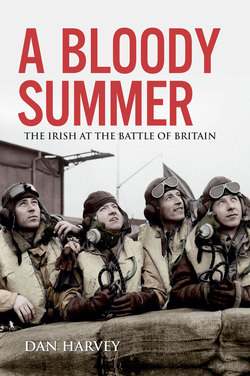Читать книгу A Bloody Summer - Dan Harvey - Страница 10
На сайте Литреса книга снята с продажи.
ОглавлениеACKNOWLEDGEMENTS
One unavoidable facet of the Battle of Britain, strategically and tactically, was a consideration of time and space. How to act according to its advantage was crucial to the battle’s course and development. The boundless expanse of the airspace over Britain’s landmass, in terms of its length, breadth and height, was in fact curtailed by this consideration.
Strategically, the English Channel, the body of water between southern England and Nazi-occupied northern France, was an obstacle to be negotiated, one which severely obstructed the German army’s progress to outright victory over all of Europe. Here, the German Wehrmacht (the army) were forced to halt. The time lost taking this ‘operational pause’ was of significance, as the delay slowed their momentum and granted the RAF vital time and breathing space with which to better prepare and organise.
The distance between German airfields in northern France and Belgium and target areas in southern England, eventually to include London, had important ramifications. Flight time and the Germans’ ability to engage in aerial combat was curtailed, as their fighter aircraft and bomber formations were limited by their fuel-carrying capacity.
The seasons and their encompassing weather, including the duration of daylight and its tidal influences, further limited favourable conditions for invasion. Opportune circumstances were only ever a transient opportunity to be seized upon. The pressure of time was paramount.
In June 1940, however, considerations of such circumstances were far back in the minds of a supremely confident, numerically superior, yet-to-be-defeated Luftwaffe, who were eager for action. Meanwhile the RAF, much more cognisant of the effects of defeat, were acutely mindful of matters of time and space and how they might affect the situation they were facing. Given their scarcity of fighter aircraft and the vast area to defend, they were earnest in considering how best to avoid occupying empty air spaces. They desperately needed to know when, in what direction and strength, and at what height, enemy bomber formations were approaching, and how the best use of time and space could be employed to defend against them.
They had already made good use of time, readying themselves for the inevitable air battle by developing radar and organising the division of the air space in which the battle would be fought. The marshalling of this geographically structured fighter defence system granted a sophisticated, unprecedented framework. The production of fighter aircraft and the training of pilots was crucial, increasing the chances of interception with minimum scramble times. Significantly, these arrangements were not in an effort to counter one big effort over the Channel; instead it was a battle to occur steadily over time. It involved the careful attrition of the Luftwaffe while keeping British losses to a minimum. Such losses were unavoidable, however, and, with the battle ongoing, the time it was taking to train RAF replacement pilots was becoming increasingly crucial. It became a race against time, a competition with the clock which governed the RAF’s ability to reduce the strength of the Luftwaffe before they themselves ran out of pilots.
Thus, time and space played their part in shaping the course of the Battle of Britain – much as they did in the writing of this book. Deadlines and schedules, both the author’s and the publisher’s, had to coincide to make the publication possible. Also of tantamount importance was the input of Edward McManus of the Battle of Britain Monument Committee; his comprehensive knowledge of the battle’s RAF participants was central to its completion. His enthusiasm, graciousness and goodwill in sharing this information was crucial. So was his review of the text in its formative stages, and his unstinting advice and assistance. Thanks also to Maurice Byrne, whose prompt and positive response to my queries was a huge reassurance; to Paul Fry Brigadier General (retired), former General Officer Commanding Irish Air Corps, for writing the foreword for this book, a significant addition; to Conor Graham, Fiona Dunne, Patrick O’Donoghue, Myles McCionnaith and Maeve Convery at Merrion Press; to Deirdre Maxwell, for the typing of the handwritten manuscript; and to Paul O’Flynn, for all his encouragement and practical assistance throughout.
